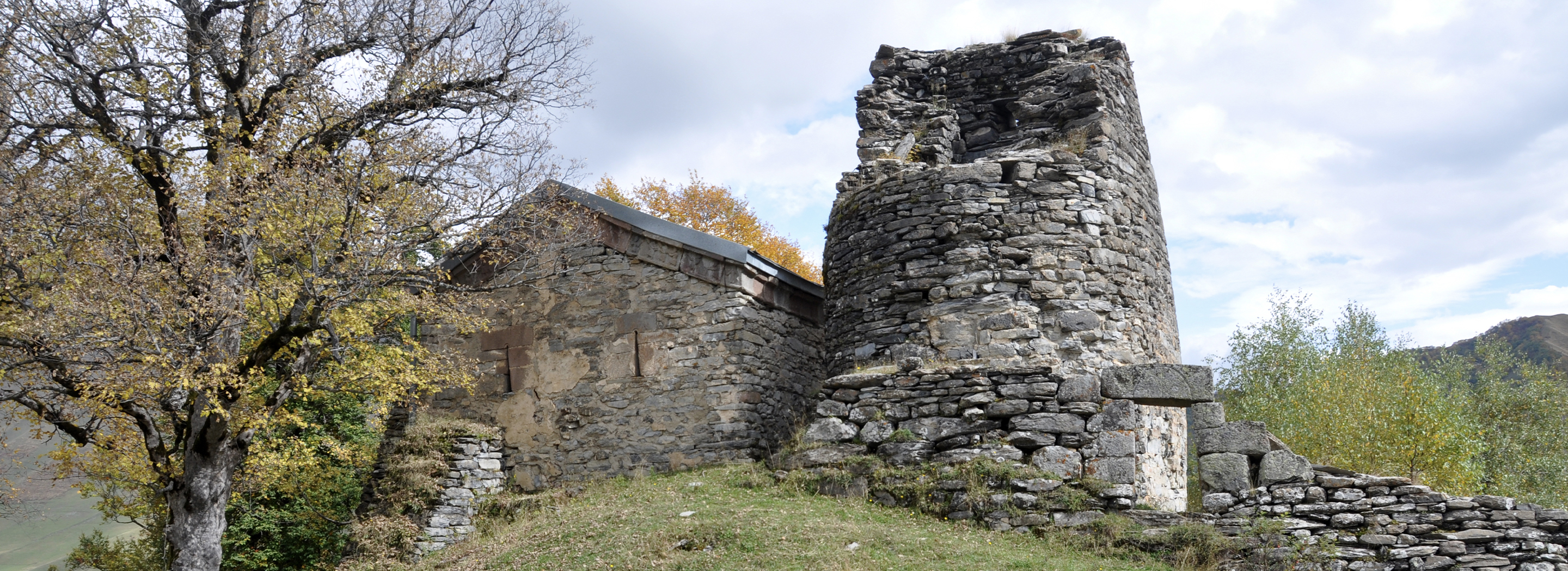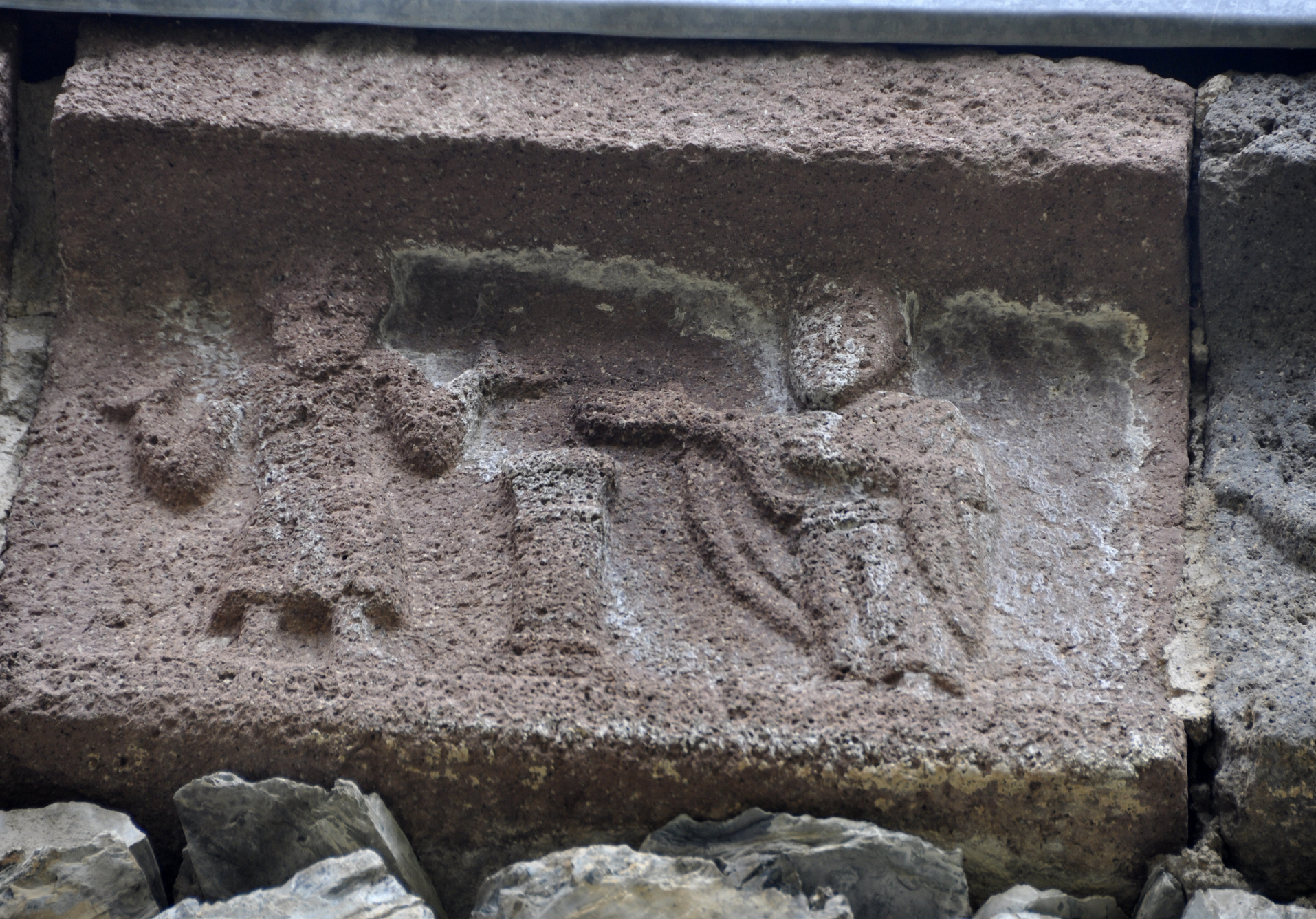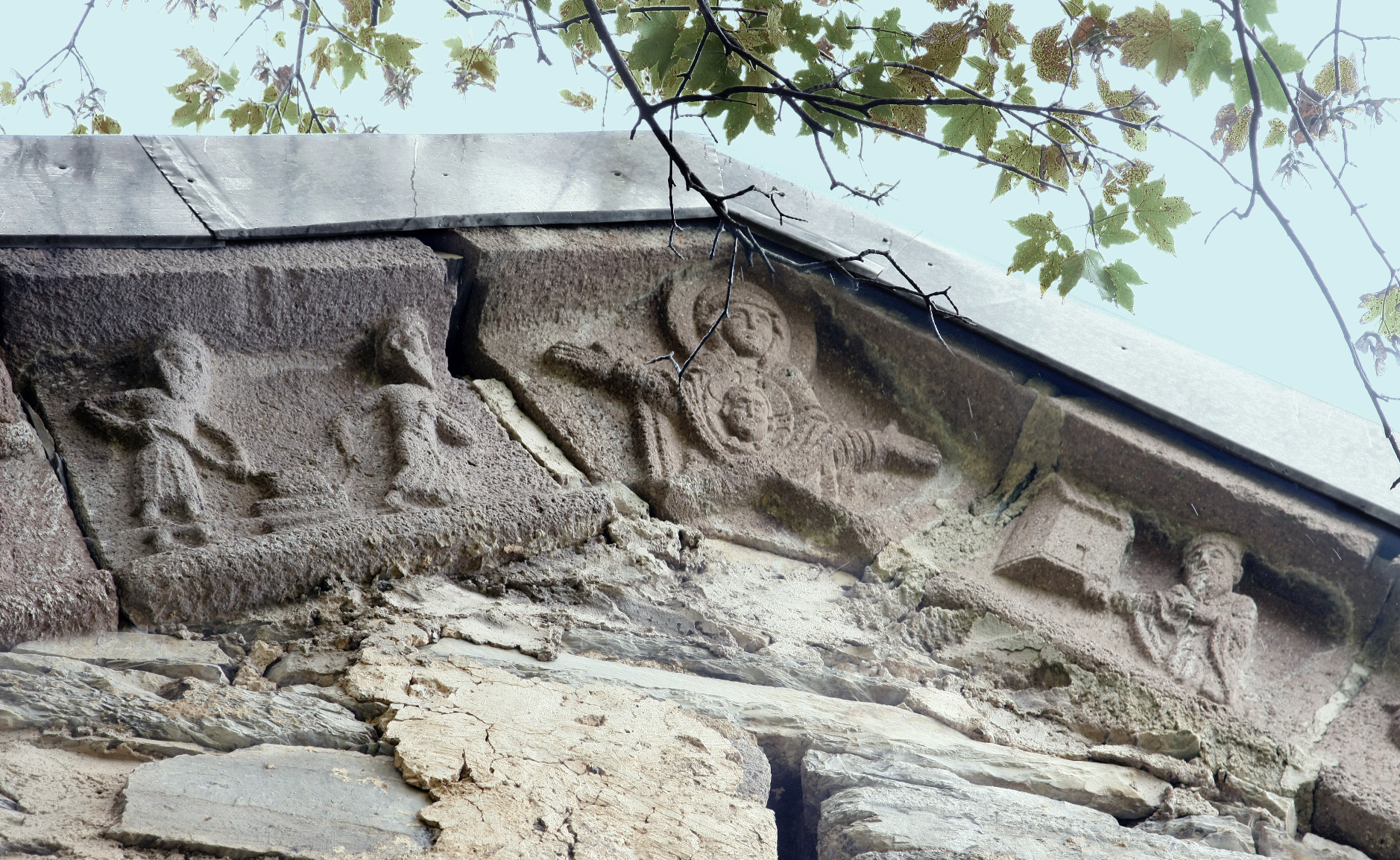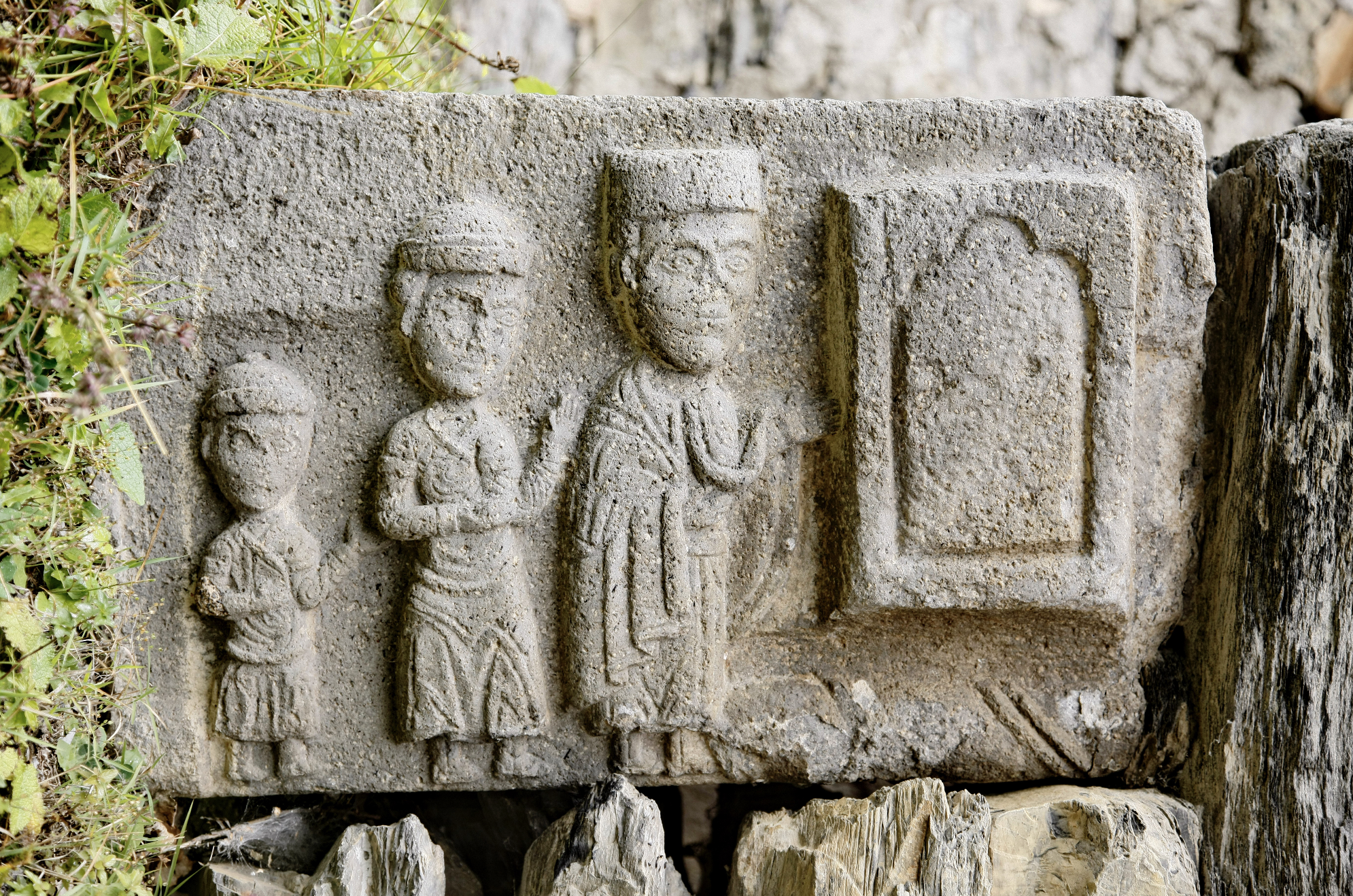
Feel free to add tags, names, dates or anything you are looking for


The Church of the Mother of God is situated in Khada Gorge, East Georgia, in a breathtakingly beautiful location near the remote mountain village of Korogo. It was built in the late tenth century, and in the turbulent late Middle Ages it was surrounded with defensive towers and other structures.

Being very modest in its architecture, Korogo Church has an unusually rich sculptural decoration. Its western façade features a high cornice completely devoted to scenes of the construction process. The sculptures portray masons and labourers carrying out various tasks.

Cornice on the western façade
The first scene on the left displays a quarryman obtaining a block of stone from a quarry. The next image illustrates the transportation process: the block of stone lies on a sledge, to which a pair of oxen is yoked. The third scene shows two workers preparing mortar using a special tub for mixing lime with water. In the fourth scene, workers are seen carrying mortar and water. The fifth scene displays two workers carrying a stone on a sledge.

Transporting a block of stone on a sledge
A further sequence continues on the opposite side. The first scene that is carved in the lower end of the cornice shows a woman bringing food and drink to the workers. In the second scene on the right hand side, two laborers are depicted working with a huge block of stone. The next image shows three workers carrying smaller blocks on their backs.

Consecration of the church altar
The following two scenes on the cornice of Korogo Church are not directly connected with the building process. One represents the consecration of the church altar, the other shows the presentation of a model of the church building to the Virgin. At the top of the gable, there is an image of the Virgin and Child.

Images at the top of the gable
In this way, the cornice of Korogo Church provides an entire array of images of masons. In fact, this is a stage by stage account of its construction, starting from quarrying and ending with the dedication of the church.

Donors of Korogo Church
There is one more important sculpture that presumably once served as the capital of a column. It was later reused in the roughly-built southern porch, and was inserted upside down at the base of its wall. The sculpture represents three donors, one of whom – obviously the head of the family – is holding a large rectangular object in his left hand. On the even surface of the rectangle, the plan of a building is carved. In the Middle Ages, donors were often depicted with models of churches, but they were never shown holding the plan of a church. The sculpture in Korogo is the only exception, which suggests that the concept of a drawn architectural plan was familiar to medieval Georgian builders and donors.